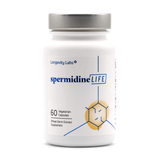
Building our Boundaries
Our body is a fine-tuned, well-oiled machine that works very efficiently and effectively when it is healthy. The first lines of defense our body has are the membranes used to keep foreign bodies out, establish electrochemical gradients within the cells that help drive many important physiological functions, and keep important cellular information protected. These membranes are often the first to be impacted and are easily damaged when our health is thrown out of balance. While damage to our bodies is inevitable, it’s the ability to protect and contain these damages within our membranes to help prevent any further damage that is incredibly important.
There are several ways in which our body works to contain these intrusions, such as our red and white blood cells forming scabs to close our membrane to the outside environment. Additionally, some membranes are meant to establish gradients within the cells that drive important physiological functions in our body. One great example of this is the sodium-potassium pump that operates within our muscles, causing them to release and contract on command.
One final purpose for membranes within our body is the diffusion of metabolites across these membranes. A great example of this is the membrane in our guts, which is home to a flourishing colony of bacteria that aid in digesting our food into molecules small enough to pass through our gut membrane to provide the building blocks for processes throughout our body. While membranes may be our body's first line of defense from the outside world, they also play important metabolic and physiological roles throughout our entire body.
How it Affects Your Health
These membranes help keep our body functioning normally and are an extremely important piece of the overall health puzzle. The protection, electrochemical gradients, and metabolite diffusion they provide affect multiple functions across all levels of our health. However, when one of these membranes is damaged, it can result in a waterfall of negative effects that lead to overall poorer health and the development of severe disease.
For membranes like the inner mitochondrial membrane and nuclear envelope, whose jobs are to remain impermeable to outside interference and maintain the electrochemical gradients required for oxidative phosphorylation, compromised barriers can have detrimental effects. When these barriers are compromised, it can lead to a compromised metabolism, damage to our DNA, osteoporosis, neurodegeneration and in some instances, cell death.
Barriers like the blood-brain barrier and the intestinal membrane play a slightly different role in our bodies, allowing selective diffusion across the membranes for metabolism and signaling molecules to pass through. In the brain, the transport of molecules from our capillaries into the central nervous system and vice versa is an extremely important part in our daily function.
In the intestines, the membrane is covered in a mucus layer that is home to millions of bacteria that aid our body in digestion. The gut not only helps to fight off infections from any foreign microbe that may have survived the stomach, but also helps break down food into molecules small enough to pass through the membrane to help nourish and rebuild our body from the strains of everyday life.
These barriers clearly play a huge role in the normal function of our body and our health overall, so their maintenance is as important as their existence. Damage to these barriers is inevitable, but our bodies have developed ways to repair and protect these barriers to prevent systematic failure and contain any damage to a local area that is easier to fix. These processes include barrier repair, elimination of foreign bodies, limiting inflammation, immunosurveillance, immune responses and cell clearance.
When these repair mechanisms work improperly, either over or under active, it can lead to over negative effects like inflammation, autoimmune disorders, atrophy, cardiac arrhythmias, organ dysfunction, cancer and neurodegenerative disorders. However, there are many things we can do to proactively protect our barriers and preserve our bodies natural maintenance functions to ensure health and happiness.
What You Can do to Help
The entire purpose of the review for Hallmarks of Health was to identify solid factors that have a positive influence on our health, but also what we can do as normal people to stay on the front edge of our health and maintain a good lifestyle rather than reacting to disease. When it comes to maintaining our membranes, there are some very easy and simple ways we can help our body out.
-
Hydration
One of the easiest things we can do is to maintain a good level of hydration. We are 70% water and staying hydrated, outside of making us feel overall better, helps our physiological processes run much smoother and more efficiently. -
Diet
To help build our membranes and barriers, a well-balanced diet full of fiber and essential vitamins and minerals will go a long way in promoting both membrane and overall health. Additionally, for repair, anything that helps with wound repair will also in turn aid in the barrier repair process.
As we discussed, there are three main groups that help define our Hallmarks of Health. This first group, spatial compartmentalization, characterized by the barriers and membranes our body creates and how they are maintained, has its own unique benefits to our health and interacts with many different functions at all levels of our physiology. The other two groups, maintenance of homeostasis and stress response, are just as important and work to keep us healthy within their own systems. These three groups work together like a puzzle, without one, the others cannot thrive, but when everything fits together, we are able to enjoy the optimum benefits of health and wellness.







